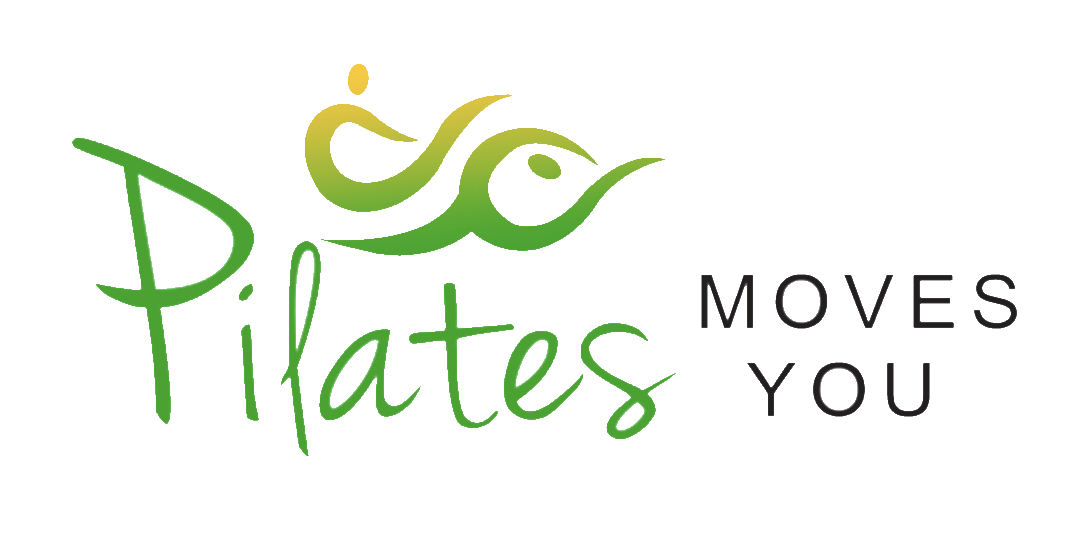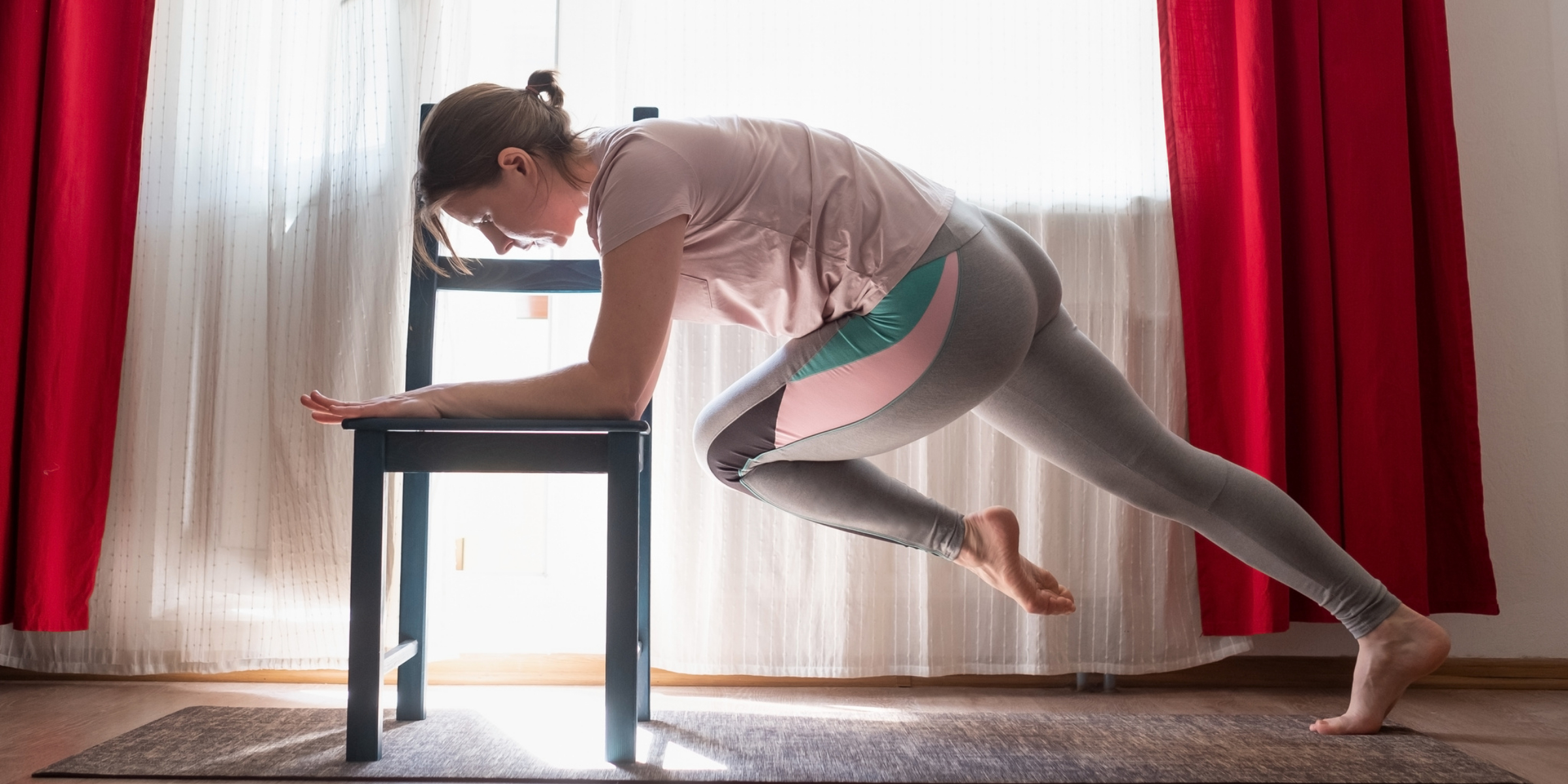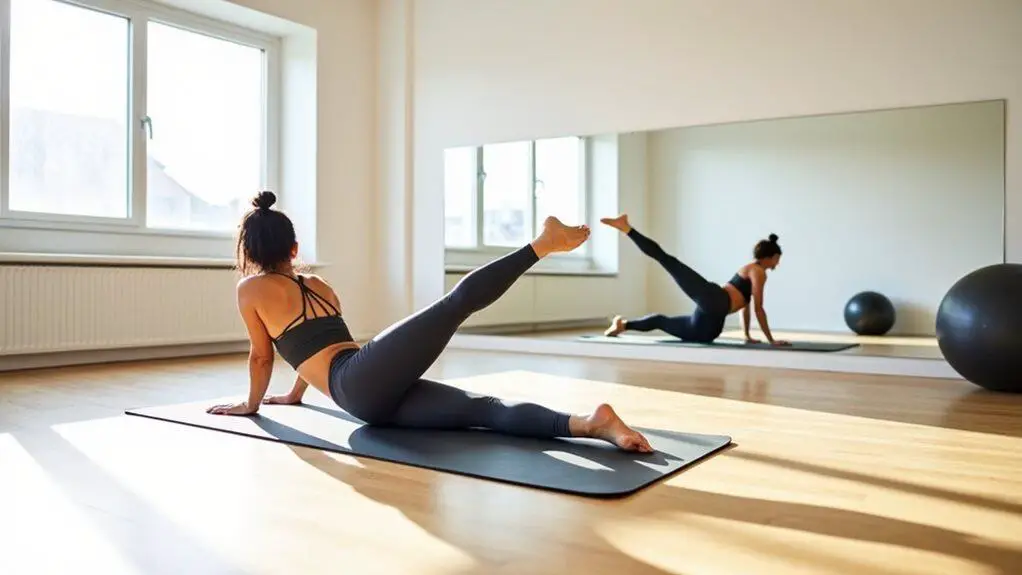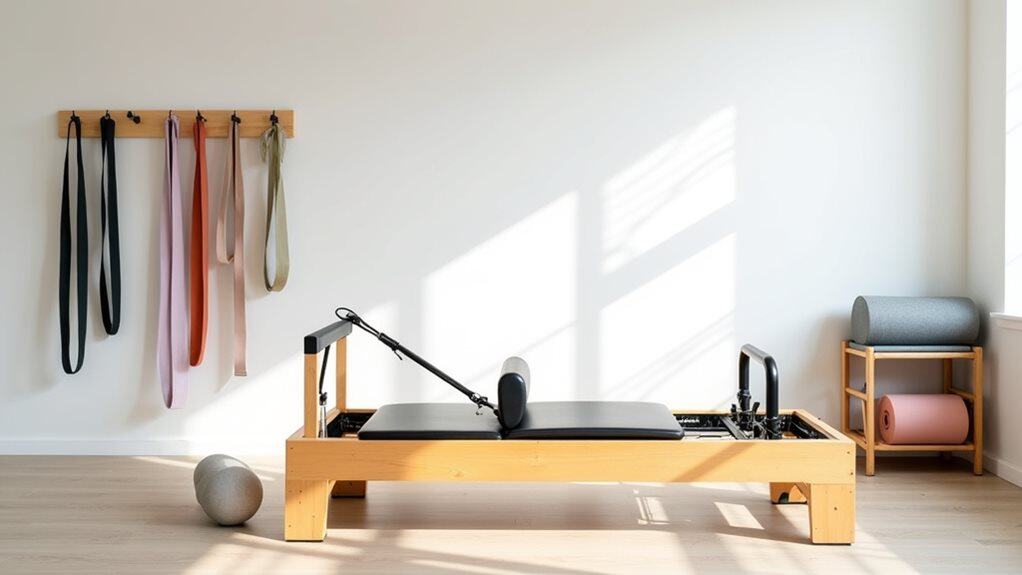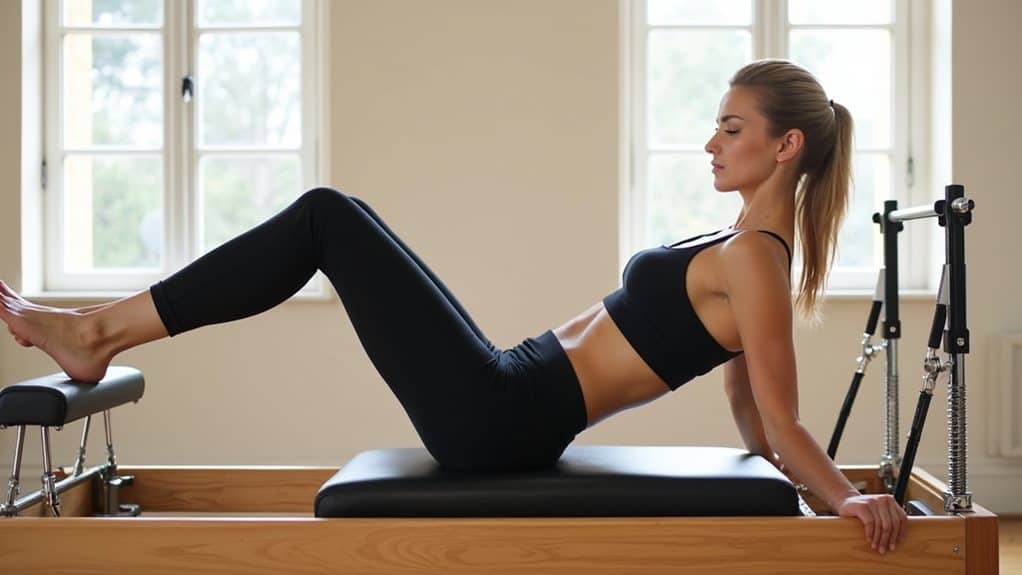Stepping into the realm of wellness and physical strength, you might find yourself cradled by the arms of a unique practice. This discipline, built around movement, balance, and strength, marries the familiar and everyday with the extraordinary and novel. It asks you to embrace a piece of furniture you’ve known for a lifetime in a way you never thought possible.
Chair Pilates is a modification performed using a chair for support, making it accessible for all fitness levels. It maintains the core principles of traditional Pilates—focus, control, and precision—while offering increased stability. Compared to other Pilates types, it’s less intense yet equally effective for strengthening and flexibility.
As you continue this journey, you’ll uncover a world that draws on its kin and differentiates itself profoundly. It invites you to sit down, quite literally, and discover the richness hidden in the mundane.
Unveiling Chair Pilates: A Brief Introduction
Chair Pilates is a variant of the traditional Pilates exercise method, known for its focus on core strength, balance, and flexibility. The key differentiator is using a chair as a primary piece of equipment, which helps to adapt the original Pilates exercises uniquely. It was designed to make Pilates more accessible and accommodating for all fitness levels and abilities, including those with mobility issues or recovering from injuries.
Unlike traditional Pilates, which requires lying down on a mat or using specialized apparatus like a reformer, Chair Pilates involves a series of movements performed while seated or standing, using the chair for support.
The chair becomes an effective tool for aiding stability while still enabling the practitioner to experience the full benefits of Pilates, including enhanced body awareness, improved postural alignment, muscle tone, and increased flexibility and balance. The exercises can be adapted to be more or less challenging based on the individual’s needs, making Chair Pilates a flexible and inclusive fitness practice.
The Evolution of Chair Pilates: A Unique Adaptation
Chair Pilates evolved from the principles of traditional Pilates, which Joseph Pilates developed in the early 20th century. Recognizing the need for a more accessible form of exercise that could accommodate people of different fitness levels and abilities, Chair Pilates was designed.
This adaptation capitalized on the same core principles of concentration, control, precision, breathing, and fluid movement. However, it introduced using a chair to provide additional stability and support. The chair became an integral part of the exercise, enabling practitioners to perform various movements while seated or standing and allowing for a more inclusive fitness practice.
Over time, Chair Pilates has grown in popularity, particularly among those seeking a low-impact exercise regimen adaptable to their specific needs. Its progression signifies the evolution of Pilates as a whole, underlining the discipline’s commitment to universal accessibility, individual progress, and overall wellness.
Chair Pilates versus Mat Pilates: A Comparative Analysis
A few key distinctions and similarities emerge when comparing Chair Pilates to Mat Pilates. Both forms hold to Pilates principles—concentration, control, centering, flow, precision, and breath. However, their execution and the equipment used distinguish them from each other.
Mat Pilates is the most common form, traditionally performed on a cushioned mat, using body weight as resistance. It’s widely recognized for its effectiveness in strengthening the core muscles, enhancing flexibility, and promoting overall body awareness. Mat Pilates can be challenging, particularly for beginners or those with physical limitations, as many exercises require substantial strength, balance, and coordination.
On the other hand, Chair Pilates utilizes a chair as the main prop, creating an adaptable and accessible version of the original Pilates. This variant opens up the benefits of Pilates to a wider range of individuals, including the elderly, those with mobility issues, and individuals recovering from injuries. Exercises can be performed either seated or standing, with the chair providing support and stability.
Compared to Mat Pilates, Chair Pilates exercises tend to be less intense but can still deliver effective strength, balance, and flexibility results. The chair also adds an element of versatility, as it can be used to modify traditional Pilates exercises to varying degrees of difficulty, accommodating each practitioner’s unique needs and abilities.
In conclusion, while Mat Pilates and Chair Pilates share the same underlying principles, the choice would depend on an individual’s fitness level, mobility, and personal goals.
Diving Deeper: The Benefits and Suitability of Chair Pilates
Chair Pilates, while a variant of the classical Pilates method, offers a unique set of benefits owing to its use of a chair as a primary piece of equipment.
Accessibility and Versatility: One of the major benefits of Chair Pilates is its accessibility. It is suited for individuals of all ages and fitness levels, making it an inclusive exercise regimen. Using a chair for support offers an adaptable platform for varying the intensity and complexity of exercises based on each individual’s comfort and ability.
Strength and Flexibility: like traditional Pilates, Chair Pilates focuses on core strengthening and full-body flexibility. Even with a chair, the exercises are designed to engage multiple muscle groups, improve muscle tone, and increase the range of motion.
Improved Balance and Posture: The exercises in Chair Pilates contribute significantly to improving balance and posture. Using a chair helps maintain proper alignment, thus reinforcing good posture and reducing the risk of falls, particularly in older adults.
Rehabilitation and Pain Management: Chair Pilates can also be an effective tool in physical rehabilitation and pain management. The low-impact nature of exercises and the ability to adjust the intensity make Chair Pilates beneficial for recovering from injuries or chronic pain conditions.
Mental Health: Beyond physical benefits, Chair Pilates also contributes to mental well-being. The principles of concentration, control, and precision demand mindfulness, helping to reduce stress and promote a sense of calm.
The suitability of Chair Pilates, therefore, extends beyond just physical fitness. It embraces individuals at different stages in their fitness journey, offering a welcoming, adaptable, and effective method to improve overall health and wellness.
Performing Chair Pilates: Essential Exercises to Get Started
Before starting any exercise regimen, it’s important to consult with a healthcare provider or a trained Pilates instructor, particularly if you’re new to the discipline or have any health concerns. That being said, here are a few fundamental Chair Pilates exercises that can help you get started on this fitness journey:
1. Seated Spinal Twist: Keep your feet flat while seated upright. Extend your arms out to the sides at shoulder height. Slowly twist your upper body to one side, hold for a few seconds, then return to the center and repeat on the other side.
2. Chair Marches: Sit tall with your feet flat on the floor. Slowly lift one knee towards your chest, then lower it back to the ground. Repeat this movement with your other knee. This exercise can also be done standing, using the chair for support.
3. Standing Leg Lifts: Stand sideways to the chair, holding it for balance. Keeping your spine tall, slowly lift the outer leg to the side as far as comfortable. Lower your leg and repeat. Do the same on the other side.
4. Seated Arm Raises: Sit upright and extend your arms down by your sides. Keeping your shoulders down, slowly raise your arms to shoulder height, then lower them back down.
5. Sit-to-Stand: Begin seated, then stand up straight without using your hands. Sit back down with control. Ensure you engage your core and use your leg muscles to drive the movement.
These exercises provide a solid foundation for practising Chair Pilates, giving you a sense of the discipline’s emphasis on control, precision, and movement fluidity. Remember, performing each exercise with mindful attention to your body’s alignment and capabilities is essential.
The Art of Balance: Combining Chair Pilates with Other Forms
While Chair Pilates can be an effective workout on its own, it can also be beneficial when combined with other Pilates or exercise regimens. This combination enhances physical strength and flexibility and contributes to an enriched understanding of body dynamics.
Integrating Chair Pilates with Mat Pilates: Chair Pilates can be an excellent supplement to a mat-based practice. Some exercises might be challenging on a mat due to limited strength or flexibility. In such cases, performing similar movements on a chair can provide support while maintaining the core engagement necessary for Pilates.
Chair Pilates and Reformer Pilates: Reformer Pilates uses specialized equipment with a moving carriage and adjustable springs for resistance. Combining it with a chair, Pilates can offer a wider range of movement possibilities, with the chair providing an alternative platform for some exercises.
Chair Pilates as part of a holistic fitness regimen: Beyond Pilates, Chair Pilates can complement other forms of exercise like yoga, cardio routines, or strength training. It offers a low-impact alternative to provide active recovery while contributing to overall fitness goals.
Balancing Chair Pilates with other forms of Pilates or exercise adds variety to the workout routine and allows for a comprehensive approach to fitness, accommodating different needs, goals, and preferences. Remember, the key to a successful fitness regimen is consistency, enjoyment, and mindful movement, ensuring that it supports your overall well-being.
Chair Pilates in the Fitness World: Perception and Acceptance
In the evolving fitness landscape, Chair Pilates has carved a niche, gaining recognition for its accessibility, versatility, and effectiveness. Its unique adaptation of traditional Pilates principles to a chair-based format has allowed it to reach a wider audience, including individuals of varying fitness levels, abilities, and age groups.
Its acceptance within the fitness community is largely driven by its inclusive nature. Traditional exercise routines can often be intimidating or physically demanding, making them inaccessible for some. Chair Pilates, on the other hand, presents a welcoming alternative. Its low-impact, modifiable exercises accommodate a range of physical capabilities, making it an ideal choice for seniors, those with mobility issues, or individuals recovering from injuries.
Furthermore, Chair Pilates has been embraced by fitness professionals and healthcare providers alike for its rehabilitation benefits. The chair provides a stable platform to perform controlled movements, aiding recovery processes and pain management.
Despite being a relatively recent entrant in the fitness world, Chair Pilates has gained recognition in mainstream fitness culture. It’s often offered in gyms and fitness centers as part of their group class schedules, and numerous online resources have also sprung up, allowing individuals to practice Chair Pilates from the comfort of their homes.
Overall, Chair Pilates has successfully bridged the gap between fitness and accessibility, challenging the notion that effective workouts must be intense and strenuous. It underscores the fact that fitness, above all, should be inclusive, adaptable, and supportive of overall wellness.
A Closer Look at the Equipment: The Role of the Chair in Pilates
As used in Chair Pilates, the chair plays a significant role in modifying and adapting the traditional Pilates exercises.
The chair’s primary role in Pilates is to provide stability and support. It aids in balance, allowing individuals to perform exercises they might otherwise find challenging. This particularly benefits those with limited strength, flexibility, or mobility.
The chair offers a versatile platform for performing various seated and standing exercises. It can modify traditional Pilates exercises, adjusting the intensity and complexity according to the practitioner’s comfort and ability.
The chair also aids in promoting proper alignment and posture during exercise. Encouraging an upright seated or standing position, it ensures that the body maintains correct form, which is crucial for the effective and safe execution of Pilates movements.
One of the key aspects of using a chair is that it helps make Pilates more accessible. The chair can be any stable, sturdy chair that allows the feet to touch the floor while seated, which means you can practice Chair Pilates virtually anywhere.
In essence, the chair in Pilates is not just a prop but a transformative piece of equipment. It helps tailor the exercises to individual needs, making the practice inclusive and universally adaptable. Its role underscores the adaptability of Pilates as a discipline, ensuring its benefits can be enjoyed by all, regardless of age or fitness level.
Next Steps: Integrating Chair Pilates into Your Fitness Routine
Integrating Chair Pilates into your fitness routine can be a rewarding step towards improved strength, flexibility, and overall well-being. Here are some suggestions to help you get started:
Consult a Professional: Especially if you’re new to Pilates, it’s advisable to consult a healthcare provider or a certified Pilates instructor. They can help you understand the principles of Pilates and guide you in performing the exercises correctly and safely.
Start Small: Begin with a few basic Chair Pilates exercises, gradually adding more as your strength and flexibility improve. Start with short sessions, gradually increasing the duration as your endurance builds.
Consistency is Key: Like any exercise routine, consistency is crucial for Chair Pilates. Aim to incorporate it into your fitness routine a few times a week, focusing on quality of movement over quantity.
Mindful Movement: Pilates emphasizes mindful movement, so pay attention to your body and how it feels during each exercise. Avoid any movements that cause discomfort or pain.
Progress at Your Pace: Everyone’s fitness journey is unique, so it’s important to progress at your own pace. Celebrate small victories and improvements along the way.
Variety: Mix Chair Pilates with other forms of exercise to create a balanced fitness regimen. This keeps your workouts interesting and challenges your body in different ways.
In conclusion, integrating Chair Pilates into your fitness routine can offer various benefits. It’s a flexible and inclusive exercise method that can complement other workouts and cater to individual needs, contributing to your journey toward enhanced physical strength, flexibility, and overall wellness.
Sources:
–https://dailycaring.com/chair-pilates-for-seniors-routines-build-strength-and-flexibility/
-https://livingmaples.com/mag/pilates-chair-exercises/
